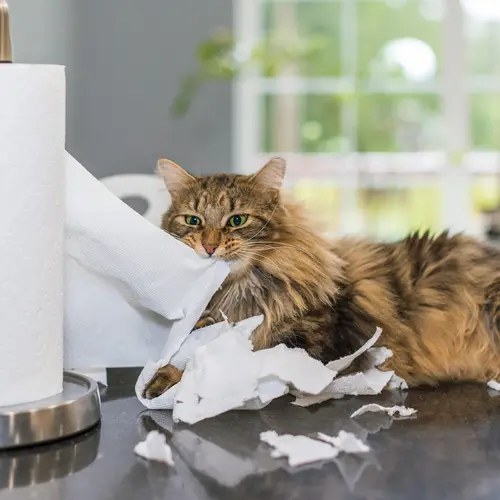Does your dog get nervous when they see you getting ready to leave the house? Do they go bonkers with joy when you come home? Did they destroy your shoes, claw the door, or chew the corner off an end table while you were gone?
Your dog could have separation anxiety.
What Is It?
Separation anxiety happens when a dog that’s hyper-attached to their owner gets super-stressed when left alone. It's more than a little whining when you leave or a bit of mischief while you’re out. It's a serious condition and one of the main reasons owners get frustrated with their dogs and give them up. But there are plenty of things you can do to help.
First, understand what causes your dog to act this way:
- Being left alone for the first time or when they are used to being with people
- Change of ownership
- Moving from a shelter to a home
- Change in family routine or schedule
- Loss of a family member
Signs of Separation Anxiety
A dog who has it shows a lot of stress when they are alone. They might:
- Howl, bark, or whine to excess
- Have indoor "accidents" even though they are housebroken
- Chew things up, dig holes, scratch at windows and doors
- Drool, pant, or salivate way more than usual
- Pace, often in an obsessive pattern
- Try to escape
They likely won't do any of these things to an extreme while you’re around. A normal dog might do some of these things once in a while, but one with separation anxiety will do them almost all the time when left alone.
How to Treat It
First, talk to your vet to rule out any medical problems. Sometimes dogs have accidents in the house because of infections or hormone problems or other health conditions. It also could be due to incomplete housebreaking. And some medications can cause accidents. If your dog takes any drugs, ask your vet if they are to blame.
If the Problem Is Mild …
- Give your dog a special treat each time you leave (like a puzzle toy stuffed with peanut butter). Only give them this treat when you're gone, and take it away when you get home.
- Make your comings and goings low-key without a lot of greeting. Ignore your pup for the first few minutes after you get home.
- Leave some recently worn clothes out that smell like you.
- Consider giving your pet over-the-counter natural calming supplements.
If the Problem Is More Serious …
A dog with severe anxiety won't be distracted by even the tastiest treats. You'll need to slowly get them used to your absence.
They may start to get nervous when they see signs you're about to leave, like putting on your shoes or picking up your keys. So do those things, but then don't leave. Put on your shoes and then sit down at the table. Pick up your keys and watch TV. Do this over and over many times a day.
When your dog starts to feel less anxious about that, you can slowly start to disappear. First just go on the other side of the door. Ask your dog to stay, then close an inside door between you. Reappear after a few seconds. Slowly increase the amount of time you're gone. Put on your shoes and pick up your keys. Ask your dog to stay while you go into another room.
As they get more used to the "stay game," increase the amount of time you're gone. Then use an outside door, but not the same one you go out every day. Make sure your dog is relaxed before you leave.
Only you can tell if your dog is ready to be left alone for longer periods. Don't rush things. Give them a stuffed treat when you've built up to 10 seconds or so apart. Always act calm when you leave and when you return.
Gradually build up the time until you can leave the house for a few minutes. Then stay away for longer and longer periods.
For All Dogs
Make sure your pet gets lots of exercise every day. A tired, happy dog will be less stressed when you leave. It's also key that you challenge your pet's mind. Play training games and fetch. Use interactive puzzles. Work their mind as well as their body. That will keep them busy, happy, and too tired to be anxious while you're gone and if these tips don't help, see your veterinarian or certified animal behaviorist.

